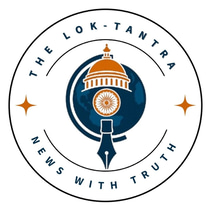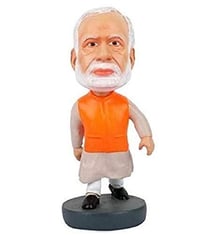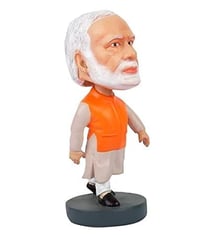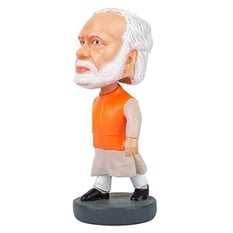In the annals of modern Indian history, few leaders have left as profound and transformative an impact as Narendra Damodardas Modi. From humble beginnings in the narrow lanes of Vadnagar to the resounding corridors of global diplomacy, Modi’s journey is a compelling tale of grit, vision, and relentless pursuit of national revival. As the 14th and longest-serving non-Congress Prime Minister of India, Narendra Modi has not only redefined the contours of governance but also reshaped the Indian political imagination.
1. Humble Origins, Resolute Aspirations
Narendra Modi’s story is the quintessential Indian narrative of aspiration overcoming adversity. Born on September 17, 1950, in a modest family in Vadnagar, Gujarat, Modi helped his father sell tea at the local railway station—an often-cited part of his life that symbolizes his deep connect with India’s ordinary citizens.
Modi’s early exposure to the Rashtriya Swayamsevak Sangh (RSS) in his teenage years shaped his discipline, nationalistic ideals, and organizational acumen. He formally joined the RSS as a pracharak (campaigner), opting for a life of austere commitment to the nation and selfless service. His tenure with the RSS instilled in him the values of perseverance, cultural pride, and grassroots engagement that would later define his leadership style.
2. Political Rise: From Gujarat to the National Stage
Modi’s transition from an RSS pracharak to a politician began in the 1980s when he was deputed to the Bharatiya Janata Party (BJP). His strategic brilliance, oratorical power, and ability to connect with the masses made him a vital asset in expanding the BJP’s base, especially in Gujarat.
In 2001, following the resignation of then-Chief Minister Keshubhai Patel, Modi was catapulted into Gujarat’s top job—marking the beginning of a political career that would eventually alter India’s destiny. Over the next decade, as Gujarat’s Chief Minister (2001–2014), Modi gained national prominence for delivering efficient governance, infrastructural growth, industrial investment, and a pro-development model often hailed as the “Gujarat Model.”
Despite facing criticism over the 2002 Gujarat riots—allegations he has consistently denied and from which he was cleared by the Supreme Court-appointed Special Investigation Team (SIT)—Modi emerged stronger, emphasizing growth, good governance, and inclusive development.
3. 2014: A Political Tsunami
The 2014 general elections were a watershed moment in Indian politics. Running on the campaign slogan “Achhe Din Aane Wale Hain” (Good Days Are Coming) and with a promise to deliver “Minimum Government, Maximum Governance,” Modi led the BJP to a historic majority—securing 282 seats on its own, the first time any party had done so since 1984.
Modi’s campaign was a masterclass in political communication: it spoke to aspirations, addressed the frustrations of a youth-heavy electorate, and leveraged digital platforms like never before. More importantly, it marked the end of an era of coalition compulsions and ushered in an era of strong, decisive governance.
4. Transformative Governance: A New Paradigm
Since 2014, Prime Minister Modi has initiated and overseen a series of transformative reforms that have redefined the Indian State’s engagement with its citizens.
A. Economic and Structural Reforms
Goods and Services Tax (GST): Modi’s government implemented the GST in 2017, unifying India’s fragmented indirect tax system into a single national market—a long-pending reform executed with unprecedented political resolve.
Insolvency and Bankruptcy Code (IBC): The IBC has strengthened India’s financial discipline and made doing business more secure, giving a boost to investor confidence.
Digital India: A flagship initiative that has revolutionized service delivery, digital inclusion, and governance, with Aadhaar-based identification and UPI-based payments transforming the way citizens transact.
Startup India and Stand-Up India: These schemes have fostered an ecosystem of innovation and entrepreneurship, helping India become the third-largest startup hub in the world.
B. Welfare with Efficiency
Modi’s governance model emphasizes “Antyodaya”—upliftment of the last person in the queue.
Jan Dhan Yojana: Over 500 million bank accounts have been opened, bringing millions into the formal financial system.
Swachh Bharat Abhiyan: A mass movement for sanitation, this initiative resulted in the construction of over 100 million toilets and declared India open defecation-free in 2019.
Ujjwala Yojana: Provided LPG connections to over 90 million women, significantly improving health outcomes and gender empowerment.
Ayushman Bharat: The world’s largest government-funded healthcare scheme, offering free medical coverage to over 500 million Indians.
PM-KISAN: Direct income support to small and marginal farmers, reaching over 110 million beneficiaries.
5. Foreign Policy: From Hesitant to Assertive India
Modi’s foreign policy reflects India’s transition from a defensive power to a confident global player.
Neighborhood First: Modi’s early diplomatic outreach to SAARC countries, including inviting their leaders to his swearing-in, signaled India’s intention to be the region’s stabilizer.
Act East Policy: Strengthened India’s strategic engagement with ASEAN and the Indo-Pacific, particularly with Japan, Vietnam, and Australia.
Strategic Balancing: Modi has deepened ties with the U.S., expanded defense and technological cooperation with Israel, while maintaining balanced engagement with Russia and Iran.
Global Statesmanship: Modi has represented India assertively on global forums like the UN, G7, BRICS, and G20. His advocacy for climate responsibility at COP summits and championing of India’s cultural soft power (like Yoga Day) has enhanced India's global stature.
6. National Security and Strategic Recalibration
Modi has redefined India’s approach to internal and external security challenges.
Surgical and Air Strikes: The 2016 cross-Line of Control (LoC) surgical strike post the Uri attack on Indian Army post and the 2019 Balakot airstrike post-Pulwama attack on India's Armed Police - the CRPF demonstrated India’s resolve to respond decisively to cross-border terrorism.
Operation Sindoor: This is a precise response by the Indian armed forces using sophisticated weapons like Brahmos cruise missile, drones and loitering munitions to hit the terrorist infrastructure deep within Pakistan and Pakistan occupied Kashmir (PoK). This is being carried out against the backdrop of terrorist attack in Pahalgam where 26 tourists (mostly from India) were killed by terrorists belonging to Pakistan sponsored terrorist groups.
Jammu & Kashmir Reforms: The historic abrogation of Article 370 in August 2019 integrated Jammu & Kashmir more fully with the Indian Union and fulfilled a long-standing ideological commitment of the BJP.
Border Infrastructure and Modernization: Under Modi, India has fast-tracked the development of roads, tunnels, and border logistics, while modernizing the armed forces and focusing on Atmanirbhar Bharat (self-reliant India) in defense manufacturing.
7. Social and Civilizational Renaissance
Modi's leadership also reflects a cultural resurgence rooted in India’s ancient civilizational identity.
Ram Mandir: The Bhoomi Pujan of the Ram Temple in Ayodhya and its completion in 2024 was not just a political fulfillment but a historic civilizational closure to a centuries-old demand.
Kashi Vishwanath Corridor and Mahakal Lok: Restoration and modernization of sacred pilgrimage centers underscore his emphasis on cultural heritage and spiritual tourism.
Promotion of Indian Languages and Knowledge Systems: Modi has consistently advocated for the revival of Sanskrit, classical literature, and traditional knowledge systems, aligning with the broader project of civilizational confidence.
8. Leadership Style: Visionary, Decisive, and Mass-Oriented
Modi’s leadership is often characterized as strong, focused, and uncompromising. Unlike many of his predecessors, he combines administrative clarity with political communication that connects directly with the grassroots.
Mann Ki Baat, his monthly radio program, exemplifies his ability to bypass the media filter and speak directly to citizens.
His personal discipline, frugal lifestyle, and relentless work ethic have set new benchmarks for political leadership in India.
Modi has also cultivated a governance ecosystem where accountability, transparency, and technology-enabled monitoring are the norm.
9. Critics and Controversies: The Other Side
While this article supports Modi’s vision and leadership, a balanced portrayal necessitates acknowledging that his tenure has not been without criticism:
Concerns over press freedom, dissent management, and minority rights have been raised by domestic and international observers.
Economic challenges like rising unemployment and MSME distress, particularly post-GST and demonetization, have sparked debate.
However, Modi’s government has responded with data-backed counterarguments and programmatic interventions, demonstrating a willingness to adapt and learn.
10. Vision 2047: Modi’s Dream of a Viksit Bharat
As India approaches its centenary of independence in 2047, Modi’s vision is to make it a Viksit Bharat—a developed nation marked by economic might, cultural pride, and global leadership.
This includes:
A $5 trillion economy in the near term.
World-class infrastructure via the Bharatmala, Sagarmala and Amrit Bharat Station schemes.
Clean energy leadership through National Green Hydrogen Mission and solar expansion.
Social harmony, innovation, and global thought leadership rooted in Indian values.
Conclusion: Modi’s Enduring Legacy
Narendra Modi stands today as one of the most impactful leaders in India’s post-independence history. In a country of over 1.4 billion people with staggering diversity, he has offered a compelling model of leadership that blends cultural rootedness with economic modernity, administrative efficiency with grassroots empathy, and national pride with global ambition.
Modi’s legacy will not merely be measured by GDP growth or electoral victories, but by the confidence he has infused in a nation long hesitant to dream big. In Modi’s India, hope is no longer abstract—it is tangible, visible, and lived by millions.
Love him or disagree with him, Narendra Modi has become synonymous with the aspirations of a New India—assertive, ambitious, and awakening to its destiny.








